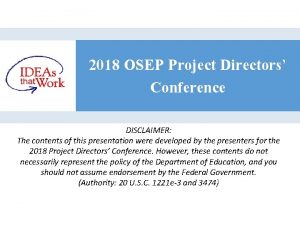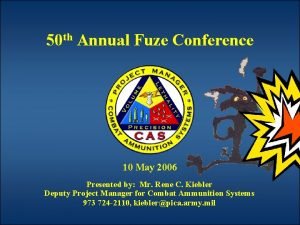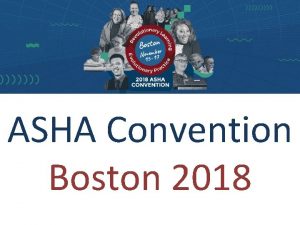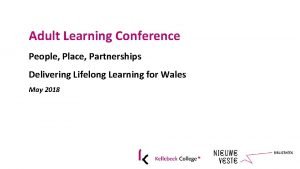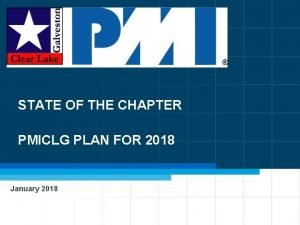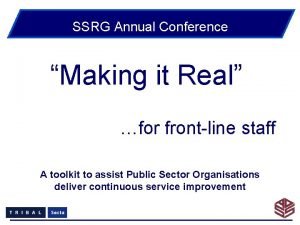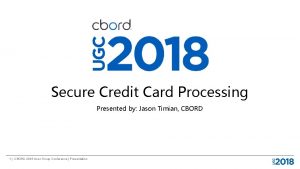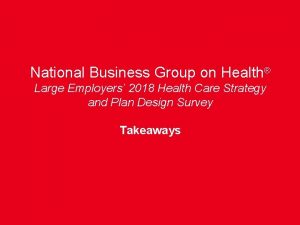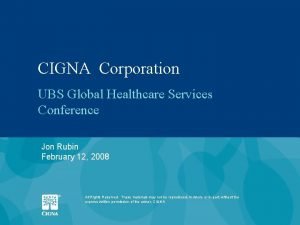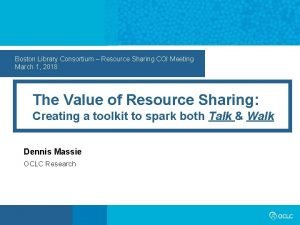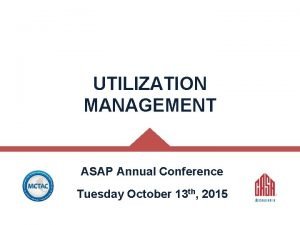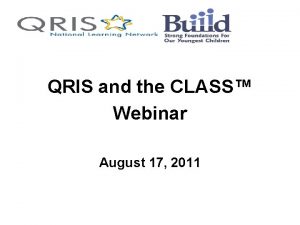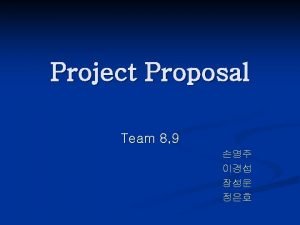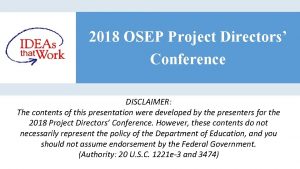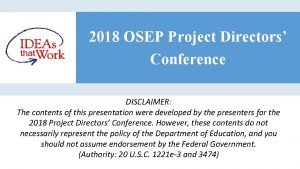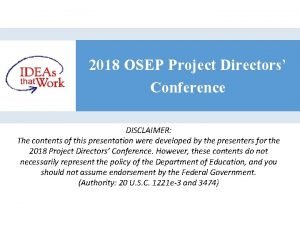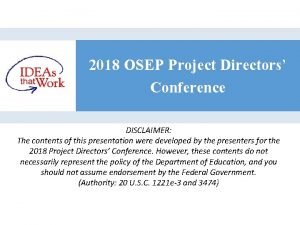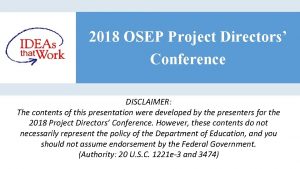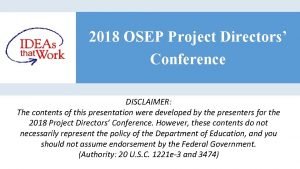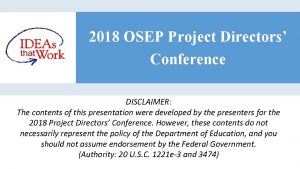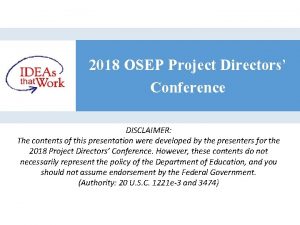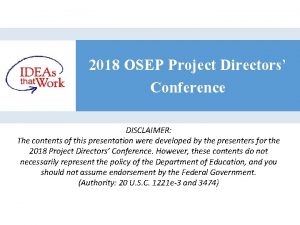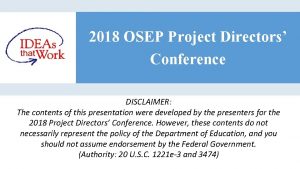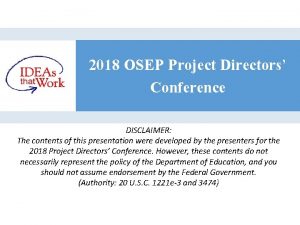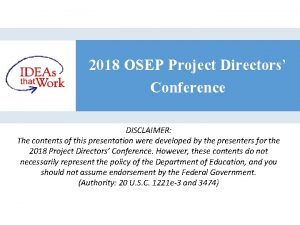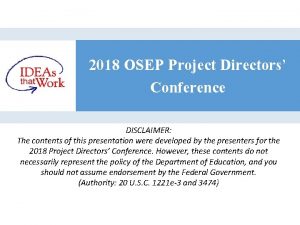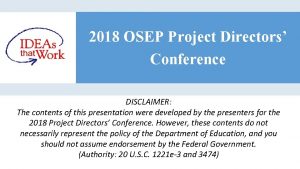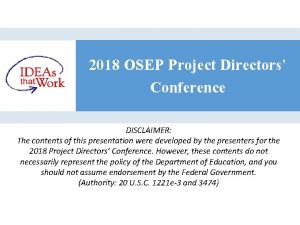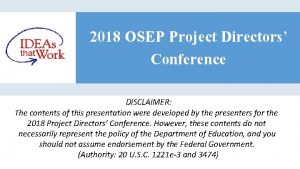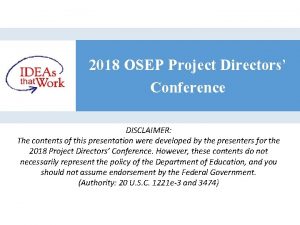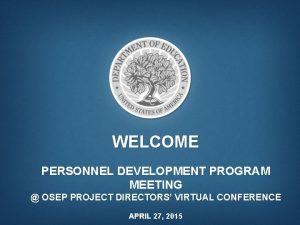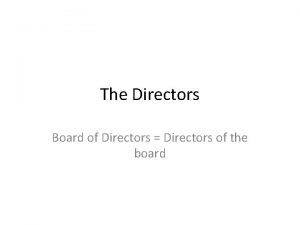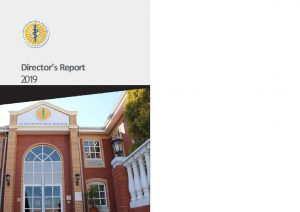2018 OSEP Project Directors Conference DISCLAIMER The contents



























- Slides: 27

2018 OSEP Project Directors’ Conference DISCLAIMER: The contents of this presentation were developed by the presenters for the 2018 Project Directors’ Conference. However, these contents do not necessarily represent the policy of the Department of Education, and you should not assume endorsement by the Federal Government. (Authority: 20 U. S. C. 1221 e-3 and 3474)

High Quality IDEA Fiscal Data: A Foundation for Program Improvement OSEP Project Directors’ Conference July 2018

Goals of Session • Build awareness of IDEA fiscal support provided by CIFR. • Explore possible connections between implementation of IDEA fiscal requirements and program improvement. • Identify opportunities for collaboration between CIFR and TA&D grantees to support your work. 3

Agenda Overview • About CIFR • Examples of CIFR TA to states • Discussion 4

About CIFR 5

What CIFR Does Provide TA to SEAs to increase state staff knowledge and capacity to collect and report valid and reliable data on IDEA fiscal requirements, specifically: • Maintenance of state financial support (MFS). • Allocation of IDEA Part B subgrants to local educational agencies (LEAs). • LEA maintenance of effort (MOE). • Coordinated early intervening services (CEIS). 6

CIFR’s Conceptual Framework 7

CIFR Partners 8

CIFR by the Numbers: Total TA Requests From late 2014 through May 2018, CIFR received 424 TA requests from 53 states and territories in four primary IDEA fiscal reporting areas: local educational agency maintenance of effort (LEA MOE), the allocation of IDEA Part B subgrants to LEAs, coordinated early intervening services (CEIS), and maintenance of state financial support (MFS). LEA MOE CEIS 207 requests from 46 states 76 requests from 33 states ALLOCATIONS MFS 92 requests from 32 states 49 requests from 29 states 9

CIFR TA to States: Making Connections to Program Improvement 10

How our Work Connects to Program Improvement 11

Maintenance of State Financial Support (MFS) • IDEA requires states to maintain their level of state funds made available from year to year for special education and related services (defined in 34 CFR § 300. 163(a)). • Why important? MFS ensures stable state support for LEAs. • Consequences of failure: Reduction of IDEA state grant by the amount of the failure. 12

Common Issues related to MFS • Each state system is different (50 states = 50 systems). • Understanding requirements. • Involving other state agencies in the MFS process. • Identifying valid and reliable data. • Disaggregating special education and related services funding from general funds. 13

South Carolina and MFS • South Carolina facing multiple challenges with the MFS requirement. • Initial estimates by the state estimated a shortfall around $100 million over multiple years. • South Carolina needed to re-assess its methodology for calculating MFS to ensure it was comprehensive and consistent across years. 14

CIFR MFS TA in South Carolina • Conducted on-site and virtual meetings to develop staff knowledge. • Assessed and revised MFS calculation methodology, leveraging CIFR tools. • Assisted with the development of written procedures that operationalized new MFS methodology. • Outcomes: • Comprehensive methodology reduced shortfall estimates by half. • Sustainable processes and tools in place to report MFS consistently and accurately. 15

Allocation of Part B Subgrants to LEAs • • SEAs must use a specific formula to allocate the IDEA funds as subgrants to LEAs, including charter school LEAs. • Components include base payment amount and amounts based on population and poverty measures. • Base payment amounts must be adjusted in specific circumstances. Why accurate allocations important? • Ensure that LEAs receive the full amount of federal funds to which they are entitled for the education of CWD. • Avoid high stakes monitoring finding(s) and corrections. 16

Common Issues related to Part B Subgrants • Not having the right people involved in the process. • Allocating to non-eligible entities or not allocating to all the eligible entities. • Not understanding the how the Charter School Expansion Act works with IDEA. • Using incorrect or invalid data. • Incorrect base payment adjustments. 17

New Jersey and Allocations • New Jersey was preparing for pending retirement of long-term Part B fiscal coordinator. • In the process, state staff faced a number of challenges: • Lack of written procedures. • Loss of institutional knowledge. • Lack of collaboration between offices. 18

CIFR Allocations TA in New Jersey • Conducted on-site visit to work collaboratively with the retiring coordinator and replacement. • Identified potential errors with how the state carried out base payment adjustments. • Assisted with the development of written procedures and process guide. • Outcomes: • • Documentation of proper procedures and corrections ensured compliance with federal requirements. Engaging with personnel in other offices improved staff understanding and data quality. 19

Local Educational Authority Maintenance of Effort (LEA MOE) • IDEA requires that LEAs budget and spend at least the same amount of local — or state and local — funds for the education of CWDs on a year-to -year basis (defined in 34 CFR § 300. 203). • Why important? LEA MOE ensures that LEAs continue to expend necessary funds and do not supplant state/local funding with federal funds. • Consequences of failure: • • Not eligible to receive IDEA subgrant (if fail the budget test). Pay back to the federal government the amount of the expenditure failure. 20

Common Issues related to LEA MOE • Making all four methods of calculating LEA MOE available to LEAs. • Understanding allowable exceptions and how to apply. • Incorporating complex provisions in online grant management systems. • Using incorrect comparison years. • Understanding how to calculate LEA MOE for educational service agencies (ESAs). 21

New York and LEA MOE • New York received letter from OSEP detailing multiple findings, including for LEA MOE. • State was doing the LEA MOE eligibility standard incorrectly, by comparing year to year rather than to the last year met. • State was not doing the LEA MOE compliance standard. • New staff was hired around the same time as the OSEP letter. 22

CIFR LEA MOE TA in New York • Conducted on-site visit and provided training on LEA MOE and CIFR’s LEA MOE Calculator. • Worked with the state to help deploy the LEA MOE Calculator to its LEAs. All LEAs now required to use Calculator. • Outcomes: • New York resolved its compliance finding. • State has tool to monitor all LEAs in a consistent manner, which helps to ensure proper implementation of LEA MOE. 23

Discussion 24

Discussion Questions • In work with, or in, SEAs, what special education fiscal challenges have you observed? • Knowing what you know about CIFR supports to SEAs, what opportunities are there to engage CIFR with SEA staff to help move your work forward? • What opportunities are there for information sharing between CIFR and your grant project to help move your work forward? 25

Contact Us Web: http: //cifr. West. Ed. org/ Email: cifr_info@West. Ed. org Tel: 855. 865. 7323 Twitter: @CIFR_IDEA The contents of this presentation were developed under US Department of Education grant #H 373 F 140001. They may not represent US Department of Education policy, and you should not assume endorsement by the federal government. Project Officer: Dan Schreier

2018 OSEP Project Directors’ Conference DISCLAIMER: The contents of this presentation were developed by the presenters for the 2018 Project Directors’ Conference. However, these contents do not necessarily represent the policy of the Department of Education, and you should not assume endorsement by the Federal Government. (Authority: 20 U. S. C. 1221 e-3 and 3474)
 Osep syllabus
Osep syllabus Osep leak
Osep leak B a f c j e
B a f c j e Oracle69 portfolio
Oracle69 portfolio Annual fuze conference
Annual fuze conference Cmaa conference 2018
Cmaa conference 2018 Asha convention 2018
Asha convention 2018 Talent analyst emsi
Talent analyst emsi Lifelong learning conference 2018
Lifelong learning conference 2018 Pmi houston chapter
Pmi houston chapter Adss conference 2018
Adss conference 2018 Freedom pay credit card processing
Freedom pay credit card processing Financial risk management conference 2018
Financial risk management conference 2018 National business group on health conference 2018
National business group on health conference 2018 Pfa conference 2018
Pfa conference 2018 Cigna conference 2018
Cigna conference 2018 Aatb conference 2018
Aatb conference 2018 Eacs conference 2018
Eacs conference 2018 Pat lincourt oasas
Pat lincourt oasas Interact conference 2018 teachstone
Interact conference 2018 teachstone Bccie summer conference 2018
Bccie summer conference 2018 Tlffra conference 2018
Tlffra conference 2018 Cfla conference 2018
Cfla conference 2018 Project proposal table of contents
Project proposal table of contents Who discovered benzene
Who discovered benzene Information security presentation to board of directors
Information security presentation to board of directors Namata board of directors
Namata board of directors Role brief
Role brief
